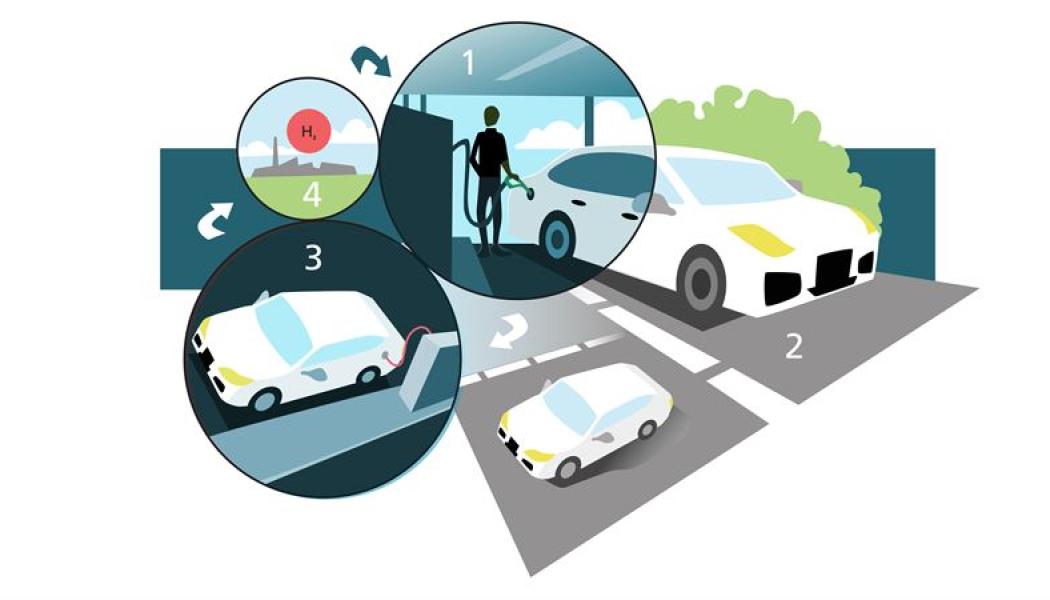Car fuel, which consists of a liquid that is converted into hydrogen by a solid catalyst, is something researchers at Lund University are investigating. The used liquid is then drained from the tank and charged with hydrogen and can then be reused in a circular system free of greenhouse gas emissions.
In two scientific articles, Londa researchers have shown that the method works, and although it is still basic research, it could become an effective energy storage system in the future.
“Our catalyst is among the most effective catalysts available, at least if you look at the open literature,” says Ola Wendt, professor at the Center for Analysis and Synthesis in the Department of Chemistry and one of the authors of the article.
Liquid fuel loaded with hydrogen
Finding alternative ways to produce, store and convert energy to reduce carbon dioxide emissions from fossil fuels is essential to reduce climate impact. One way is to talk about hydrogen gas, which many see as a future solution for energy storage. Nature stores energy in chemical bonds, the most energy dense relative to its weight is hydrogen gas.
But gas can be difficult to handle, so we are looking at liquid fuels loaded with hydrogen that can be filled at the gas station, in the same way as they are at gas stations today, says Ola Wendt.
This concept is called LOHC (reversible liquid organic hydrogen carriers), and it is not new in itself. The challenge is to find the most efficient catalyst that can extract hydrogen from the liquid.
The system is supposed to work through the presence of a liquid “charged” with hydrogen gas. The liquid is pumped through a solid catalyst that extracts hydrogen gas. This can be used in a fuel cell – which converts chemical fuel into electricity – while the ‘drained’ fluid continues to be transferred to another tank. The only emission would then be water (except for acetone which is recycled and reused).
Trading volume 99 percent
This drained fluid can then be emptied onto a tray and then filled with new charged fluid. In this case, the charged liquid would likely be produced on a large scale, compared to today’s refineries.
– Ola Wendt says: – We converted more than 99% of the hydrogen gas present in the liquid.
Researchers have also considered whether the fuel could be used for larger vehicles such as buses, trucks and planes.
– Thanks to its large tanks, you can cover as many miles as a diesel tank. You’ll also get 50 percent more energy compared to compressed hydrogen, says Ola Wendt.
There are challenges
The fluids used are isopropanol (commonly found in, for example, laundry fluid) and 4-methylpiperidine.
Doesn’t it sound too good to be true? Yes, there are still a lot of challenges. The first is that the life of the catalytic converter is very limited. Another is that iridium, which the catalyst is based on, is an expensive metal.
-But we estimate that you need about two grams of iridium for a car. This is comparable to today’s exhaust gas purification catalysts, which contain about three grams of platinum, palladium and rhodium, which are also very expensive metals, says Ola Wendt.
Could solve problems with fossil-based hydrogen
Therefore this is a technical solution based on basic research. If one bets on a final product, Ola Wendt says the concept could be ready within ten years – provided it is financially feasible and there is interest from the community.
Another issue is how to produce hydrogen, and most production today is not climate friendly. Hence, hydrogen must be stored and transported in a good way, which is not easy today. In addition, there are risks when refueling with compressed hydrogen. The researchers at Londa hope to solve all this problem with their method.
– 98% of hydrogen today is fossil and produced from natural gas. There, the byproduct is carbon dioxide. From an environmental point of view, the hypothesis of producing hydrogen for steel, batteries and fuels does not make any sense if it is done using fossil natural gas, says Ola Wendt, but he explains that there is a lot of research underway to be able to produce it. So-called green hydrogen by splitting water into hydrogen and oxygen with the help of renewable electricity
Political decisions are required
At the same time, Ola Wendt believes that political decisions are needed so that renewable and climate-friendly alternatives can gain a solid foundation.
– It must be cheaper and this requires political decisions. Renewables have no chance of competing with something that is simply dug out of the ground, as in principle there are only transportation costs, as is the case with fossil fuels.
Facts: Hydrogen and energy
Hydrogen has a high energy-to-weight density of 33 kWh/kg (for comparison: 13 kWh/kg for gasoline and <0.25 kWh/kg for lithium-ion batteries – which is why electric cars have a limited range).
However, it is difficult to store hydrogen because the substance is a gas under atmospheric conditions and therefore has a very low volumetric density. In order to maintain the important advantages of liquid fuels such as gasoline and diesel, namely relative safety, rapid regeneration, high energy density and compatibility with existing infrastructure, hydrogen storage in liquid materials has been proposed. Liquid organic hydrogen carriers (LOHC) must pass through a catalytic reactor where the hydrogen is released and directed to the fuel cell.
Fact: This is how a catalytic converter works
A catalyst is basically a substance that increases the rate of a chemical reaction without consuming itself. Catalysts can be gaseous, liquid, or solid substances. In practice, solids work best because the reactant can then be passed over the catalyst (in liquid or gas phase) and in this way the process can be made continuous. In this case, the liquid is passed through a tube with solids.

“Entrepreneur. Freelance introvert. Creator. Passionate reader. Certified beer ninja. Food nerd.”






More Stories
Intel wants to throttle the power of Cardboard Raptor Lake
For sale: Grx 400 2×10 gear set
For sale: Fox Varedo 2.0, in very good condition, size L